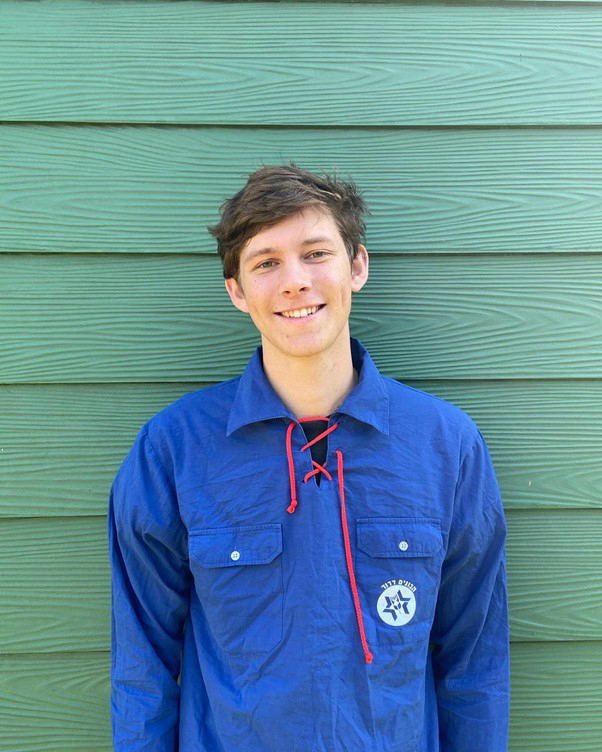click to dowload our latest edition
CLICK HERE TO SUBSCRIBE TO OUR NEWSLETTER


Published
2 years agoon
The movie Inside Out defines the protagonist’s character using core memories. It shows the impact of key experiences in shaping character. However, it’s too easy to get swept up in the din of daily life, making those moments of self-reflection rare.
Sometimes situations confront us, forcing deeper consideration of what constitutes our identity. I had such an experience running the Habonim Shabbaton at Theodor Herzl in Gqeberha (formerly Port Elizabeth).
In late June, a Habonim group embarked on a road trip up the Garden Route, engaging with various small centres. The last stop on the way was Gqeberha, where we met with the Jewish people at Theodor Herzl School, and gate crashed the school’s Jewish sessions.
Our time there was short, but it was the most challenging stop of the trip. However, we did establish a connection with the people who run the Jewish curriculum at the school. They shared our determination to connect small-centre Jews to their Jewish identity and understood the value of youth movements as informal Jewish spaces.
Subsequently, three weeks later, I got a call from our shaliach, Lior Agiv, who told us that Theodor Herzl wanted us to run a Shabbaton for the Gqeberha Jewish community.
This greatly increased the value of the Garden Route trip and provided an amazing opportunity for the movement and Jewish youth of Gqeberha.
“The Jewish people exists in all its bewildering complexity because it’s both a religion and a nation, a faith and a fate,” said the late Rabbi Lord Jonathan Sacks, and this quote displays the central concept of Jewish peoplehood nurtured through the Shabbaton.
There were various moments, which spoke to me as a Jew entrenched in the big city Jewish community, but none so much as the following two:
First, a channicha explained the value she got from being in a secular, non-Jewish environment. She felt it connected her to the broader South African context, gaining insight into the “real” South Africa.
Her holistic concept of the broader South African struggle at such a young age led me into a world in which these small communities engage much more directly with broader society, unsheltered by the bubble of the larger community in Cape Town and Johannesburg.
Second, another channie expressed how grateful she was to be in a space where she was immersed in the complexities of being Jewish. To see how privileged we are and how deprived these communities can be of comprehensible Jewish programming, opened my eyes to a different way of experiencing the South African Jewish community.
I’m grateful to be able to establish this lasting partnership with Habonim. However, this wasn’t the same Gqeberha Jewish community of yesteryear.
The South African Jewish community once thrived off Jews in small centres. Wayne Sussman, the manhig of Habonim, says that in the 1990s, a third of machaneh came from Durban, Zimbabwe, the Vaal, Pretoria, Oudtshoorn, and the Free State. This kind of a situation would be unthinkable nowadays.
Once a stronghold of South African Jewry, the Gqeberha Jewish community has dwindled in number. The Jewish school is mostly populated by those with no Jewish background, and shul services are dominated by an ageing crowd.
However, small numbers don’t equate with a lifeless community. Irrespective of the clustering of Jews into big cities and Jewish schools, wherever there are Jews, there’s a manifestation of Jewish life.
As a movement, we’ve begun to question what we can do to support smaller Jewish communities. How we can engage with each other to bring the Jewish life they desire into these seemingly forgotten communities.
Perhaps it’s pertinent for us as a broader South African community to interrogate how we push smaller communities to the fringe. Also, perhaps it’s time we began to look at Jews in secular schools as the contemporary creation of “small centres”. From this standpoint, we have the ability to move forward in productive ways. It’s time we spoke to small community leaders to see how we could best serve them. What events/programmes can we collaborate on that would enrich their Jewish experience?
Through the hard work of those involved with Theodor Herzl and the broader Gqeberha community, we ran a meaningful Shabbaton for young people who had been starved of the informal Jewish spaces so crucial to formulating the South African Jewish youth.
It emphasised the plurality of being Jewish through the nuanced abstraction of Jewish peoplehood, and extended the concept of Judaism beyond religion. This way, we embraced our history, culture, food, and divergent ideas.

Brad
Sep 1, 2022 at 9:58 am
Lovely article! Habonim doing so much, very impressive